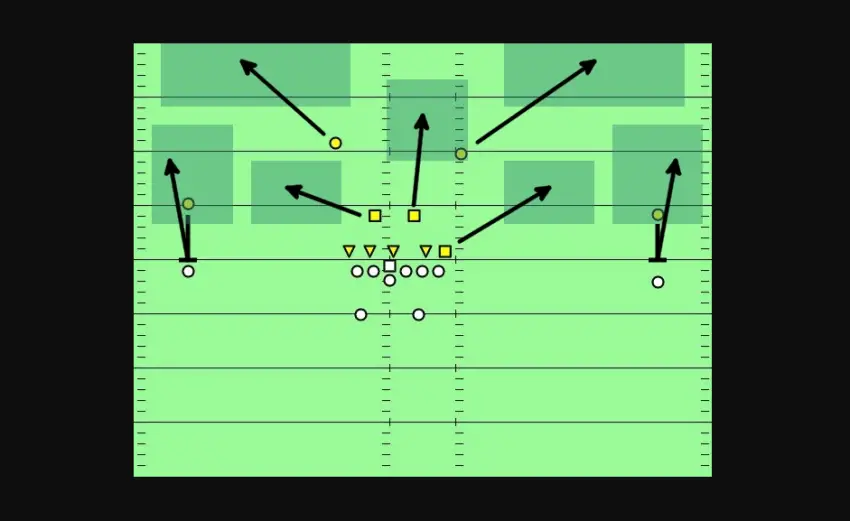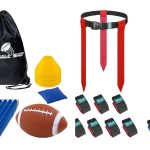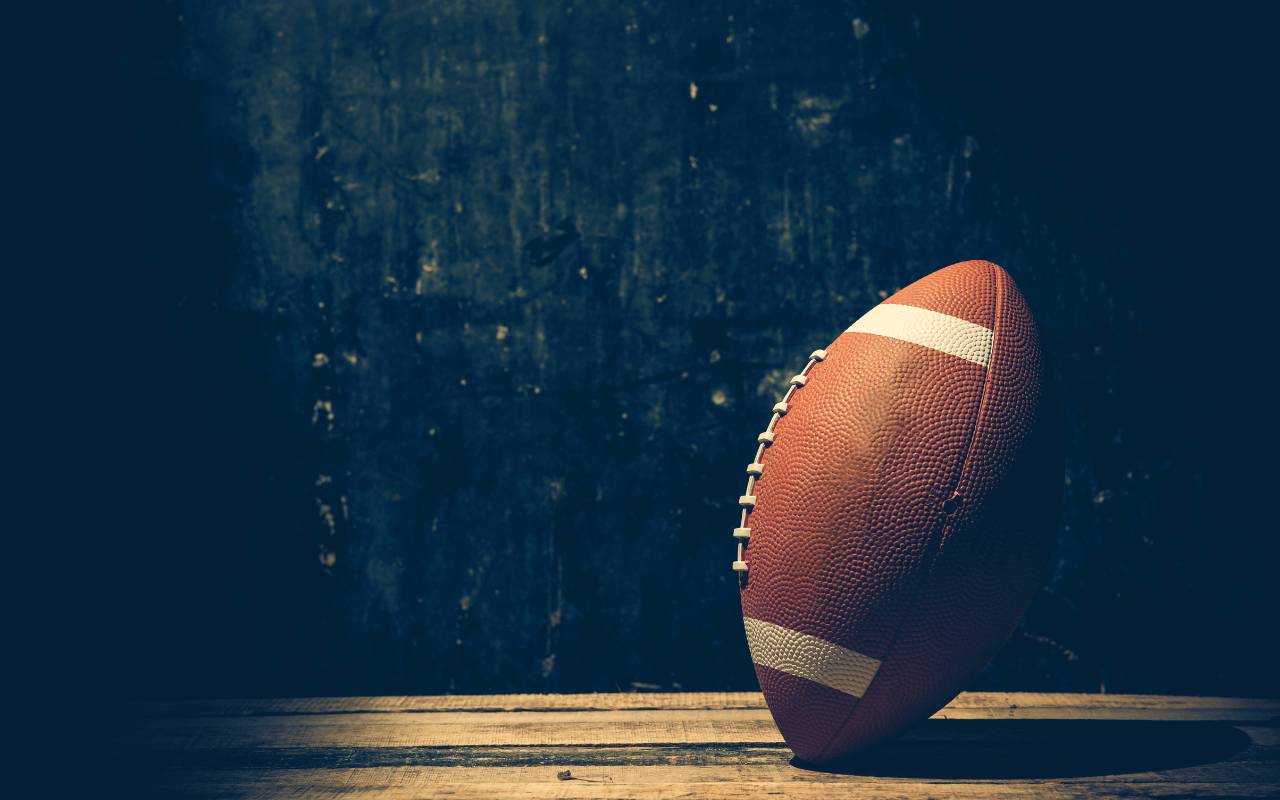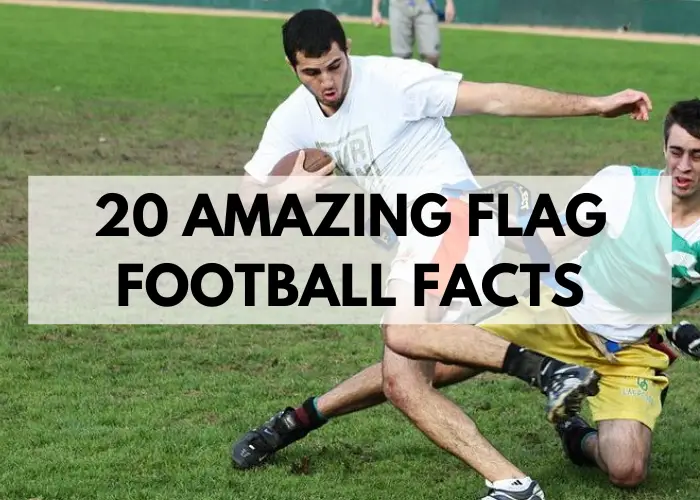Like any other sport, flag football requires a certain amount of strategy and planning to be successful. That certainly applies on the defensive side of the ball.
While having the best athletes on your flag football team definitely has its perks, it’s not always what determines a successful season. Teams that are decent overall but have good organization and basic fundamentals often win more games and make it into post-season playoffs.
As you and your team prepare for your eason, here are some of the best flag football zone defense strategies that you can use to your advantage.
Before we go over the game plan, let’s first make sure you understand all of the aspects of good flag football defense.
Best Flag Football Defensive Strategies
There are many approaches to developing a good defensive strategy for flag football. The key is putting your own spin on things and developing a plan that works for your team’s strengths.
One popular style of play is to use of a zone defense. Zone defenses are typically used to slow down the passing game. The objective is to defend a specific area of the field rather than a particular player.
In order to master the zone defense strategies, your team must understand the defense and QB rush strategies and be able to work together as a unit.
Flag pulling and tackling on defense
The best way to successfully pull an opponent’s flag on defense is by aiming for their belt instead of the actual flag. This gives you some leeway to make a mistake while still being able to grab the flag if needed.
Some of the better flag football defenders rake their fingers down the back or side of their opponents before making contact with minimal force to get a better grip on the belt before pulling.
The main downside of pulling for the flag belt is that you might grab onto the player’s shorts or shirt, which could lead to a holding penalty. Even though this happens occasionally, we still recommend using the raking technique.
Basic Defense Flag Pulling Drills
As a player, you know that you must always keep your eye on the ball carrier, but you also need to be aware of your surroundings. This is where peripheral vision comes in handy.
Peripheral vision is the ability to see objects and movement out of the corner of your eye.
It’s an important skill on defense because it allows you to keep track of the ball carrier while also being aware of other potential threats, such as blockers or defenders.
Drill #1
The most basic drill to develop peripheral vision among defenders is to get your teammates in a single-file line (these act as ball carriers) while one teammate stands five yards away from the line (acting as a defender).
Now one by one, the carriers will try to score while the defender tries to stop them. The drill is complete when every carrier has had a turn.
As the carriers become better at juking and the defenders become better at reading their movements, you can move the defender back to 10 yards away, then 15, and so on.
Every time the defender pulls a flag, the carrier must go to the back of the line.
This drill aims to help the defenders learn how to keep their eyes on the ball carrier while also being aware of their surroundings.
Get ahead with the flag football plays that win championships!
Drill #2
With so much passing and quick movements in flag football, another drill you must try is to practice as a defensive back. This is a one-on-one drill in which the defensive back must stay with their receiver and prevent them from catching the ball.
The receiver will run a route and try to catch the ball in front of the defender. The only thing the defender can do is react and attempt to knock the pass away or intercept it.
This drill is helpful because it simulates game-like conditions and forces the defender to focus solely on the receiver.
It’s also a good way to practice your flag-pulling technique after the receiver catches a pass.
Flag Football Rush Strategies
Another important part of flag football is the rush. The rusher should be one of the quickest players on your team to keep up with the opposing quarterback.
The main objective of the rush is to force the quarterback to one side and pull the flag or make a quick throw.
The rusher must be able to read the quarterback’s movements and anticipate where they will throw the ball. Once the rusher understands the quarterback’s movements, they can start to put pressure on them and force them into making mistakes.
The best way to do this is by using your hands and arms to swat at the ball while the quarterback is throwing it.
This will make it harder for the quarterback to throw an accurate pass.
Swatting at the ball can also be used to deflect passes and intercept them.
It is important to practice this technique so you can learn how to do it effectively.
How Many Rushers Should Your Team Have – 1 or 2?
Having one or two rushers is a debate that has been going on for some time now.
Using a single rusher gives you more defenders in passing lanes, which in turn increases your coverage of the field. Although sacking the quarterback is more difficult with this formation, if your single rusher can force him out of pocket and towards one side of the field, it significantly narrows down choices for the offense.
When two defenders focus on the quarterback, it’s harder for the QB to run and buy themselves more time. This strategy can work well if both players are good at working together and predicting the quarterback’s next move.
The downside, is you will have one less defensive back to cover passes.
The number of rushers you have on your team should be based on the strengths and weaknesses of your players. If you have a lot of fast players, then one rusher may be enough.
Two rushers may be necessary if you have stellar defensive backs to lockdown receivers.
Basic Rushing Drills
Drill #1
A good drill to practice your rushing is to have a defender line up 10 yards away from the quarterback.
The rest of the team should be lined up behind the defender.
When the coach says go, the first person in line will rush at the quarterback and try to pull their flag. The QB can practice as well, moving to try to dodge the defender. Give your quarterback these drills to try out.
This can be done with one or two people and is a good way to learn technique as well as read the quarterback’s movements.
Drill #2
Another way to get your rusher in game-like conditions is to have them line up 10 yards away from the quarterback.
The receiver should be lined up 5 yards away from the quarterback.
The coach will then say go, and the quarterback will drop back and try to pass the ball to the receiver. The rusher should try to swat at the ball or intercept it.
This drill can be done with one or two rushers.
Rushing Tips
- Get a good jump on the snap. This will allow you to get to the quarterback before they have a chance to throw the ball.
- While the quarterback is throwing the ball, distract them by waving your arms and hands around. This will make it more difficult for them to throw an accurate pass.
- A well-executed swat can also be used to knock away passes and intercept them. As with all techniques, practice makes perfect.
- Try to force the quarterback to throw the ball to the opposite side of their throwing arm. This will make it harder for them to complete a pass.
- Be aware of your surroundings and know where the receivers are. This will allow you to defend against passes and prevent the quarterback from scrambling.
- Work together with your teammates to create a good rush defense. This will make it harder for the quarterback to find an open receiver and give you a better chance of sacking them.
Flag Football Zone Defense Strategies
Once you have learned the above two defense and rushing strategies, you are now ready to try zone strategies.
It is important to note that zone defense strategies vary greatly depending on the number of defenders you have on the field.
Flag Football Zone Defense 5 on 5 Strategies
2-2 Box Zone or Cover 2
The 2-2 box zone is one of the most popular zone defenses in flag football. It can be run against a spread or bunch formation and is effective against both.
The 2-2 box zone is easy to learn and execute, making it a good choice for teams of all skill levels.
To set up the 2-2 box zone, two linebackers and two safeties line up on both sides of the formation. One rusher is responsible for the quarterback.
The cornerbacks cover short passes to the sidelines and middle while passing longer routes to the deeper aligned safeties.
This defense can be easily modified to fit the personnel of your team. If you have two fast players, they can be used as deep defenders. If you have two players who are good at reading the quarterback, they can be used as the linebackers/corners.
3-1 Cloud Zone or Cover 1
The 3-1 cloud zone is a variation of the 2-2 box zone.
In a 3-1 cloud zone, the defenders will line up in a 3-1 formation. Three cornerbacks cover three receivers man-to-man, with one safety in the back to zero in where the corners need help.
This means that 3 defenders will line up along the line of scrimmage, and 1 defender will line up behind them in a deep zone.
4 Across Zone
It is another flag football zone defense that is good against the pass.
In a four across the zone, all 4 defenders will line up along the line up at the line of scrimmage or a few yards back. They will each are responsible for covering their specific area of the field.
The four-across zone is very effective against quick passes and slant routes, although, it can be easily beaten with deep passes and post routes.
2-1-2 Blitz Zone
This is one of the riskiest flag football zone defenses.
In a 2-1-2 blitz zone, the defenders will line up in a 2-1-2 formation. This means that two defenders will line up along the line of scrimmage to rush the passer, with a roving cornerback or linebacker in the middle, and two safeties deep.
This defense is very effective against quick passes and slant routes. However, it can be susceptible to deep passes and post routes if the quarterback gets away from pressure.
It is also important to note that the 2-1-2 blitz zone is a very high-risk, high-reward defense.
Flag Football Zone Defense 6 on 6 Strategies
While the above strategies can easily be modified for 6-man play, there are a few specific 6-on-6 zone defenses worth mentioning.
2-3-1 Zone
This is an excellent strategy to prevent both run and pass plays.
In a 2-3-1 zone, the defenders will line up in a 2-3-1 formation. This means that two defenders line up along the line of scrimmage, three defenders behind them in a deep zone, and a central defender responsible for QB containment and quick over-the-middle passes.
3-2-1 Zone
In a 3-2-1 zone, the defenders will line up in a 3-2-1 formation.
This means that three defenders line up along the line of scrimmage, two defenders line up behind them in a deep zone, and one safety roves to where he is needed for pass coverage.
Flag Football Zone Defense 7 on 7 Strategies
Here are a few specific 7-on-7 zone defenses that are worth mentioning.
1-5-1 Zone
This strategy comprises 1 rusher, 5 linebackers, and 1 safety.
Most other defenses only require one fast player, but this defense needs two (a rusher and a safety) to be effective against short to medium passes, running plays, and long passes.
Without two very skilled and speedy players on this team, it is easier for the offense to move the ball with longer passes.
2-4-1 Zone
This is one of the most common flag football zone defenses.
It comprises 2 rushers, 4 linebackers or corners, and 1 safety.
The key to this defense is stopping short plays with the linebackers and preventing long plays with safety.
1-3-3 Zone
This flag football zone defense is excellent against the pass.
It comprises 1 rusher, 3 linebackers, and 3 safeties.
This defense can single-handedly take out the deep threat for an offense, which is then forced to work the ball down the field with short throws. In their haste, offenses will often try to go deep against this type of defense and end up failing.
Although the defense is good, there are some weak spots that could be exploited. For example, only three players cover short to medium-range passes, and only one rusher goes after the quarterback.
Offenses can take advantage of these weaknesses if it has skilled receivers and a patient team.
2-3-2 Zone
This flag football zone defense is a bit more balanced. It comprises 2 rushers, 3 linebackers, and 2 safeties.
One safety will stay back in a deep zone while the other roams around the field. This provides good coverage against both the run and the pass.
The primary downside to this defense is that it might not be able to prevent deep passes. If the other team has a speedy receiver, they could use him to get open for a long pass.
Another potential drawback is that if the other team has a skilled offense, they could take advantage of the fact that there are only three players dedicated to defending short to medium-range passes.
But, this defense can be very effective if you have a fast and skilled team with talented rushers who can get to the QB fast.
Other Zone Strategies
Apart from the above-outlined zone strategies, you can also employ mixed defenses that include both zone and man coverage.
One popular strategy is to use a 4-3 zone, which employs 4 defenders in a zone and 3 in man coverage.
Another common option is the 3-2-1 man, which uses 3 defenders in man coverage, 2 in a zone, and 1 in a deep zone.
These mixed defenses can be very effective as they allow you to take advantage of the strengths of both man and zone coverage.
For four-on-four games, take a look at these defensive strategies.
Extra Pointers
Offenses can beat zone defenses by being patient and finding the open receiver.
Defenses can beat offenses by disguising their coverage and confusing the quarterback.
Both man and zone coverage have their strengths and weaknesses. The key is to use both and mix up your play calling so that the other team does not know what to expect.
These coaching tips can help take your team to the next level.
The key to success on defense is to read and react. You have to be able to read the offense and then react quickly. This means being aware of what the offense is trying to do and then making the correct decision.
If you can do this, you will be successful on defense.
But what if the offense is one step ahead of you?
One way to combat this is to use a copycat strategy. This means that you come out on the field, watch other (better) teams play defense, and then mimic what they do.
This can be a very effective strategy, allowing you to take advantage of the other team’s knowledge and experience.
Practice Makes The Team Near Perfect
Reading and watching other teams play is all well and good, but the only way to really get better at playing defense is to practice.
This means spending time in the film room, studying your opponents, and then going out on the field and putting what you’ve learned into action.
The more you practice, the better you will become at reading and reacting to what the offense is doing.
And when you become good at reading and reacting, you will be a very tough team to beat.
So get out there and start practicing!

Vance J has played flag football since he was a boy. Since then, he has become a coach and a huge advocate for growing the sport. He loves to write and talk about flag football!










